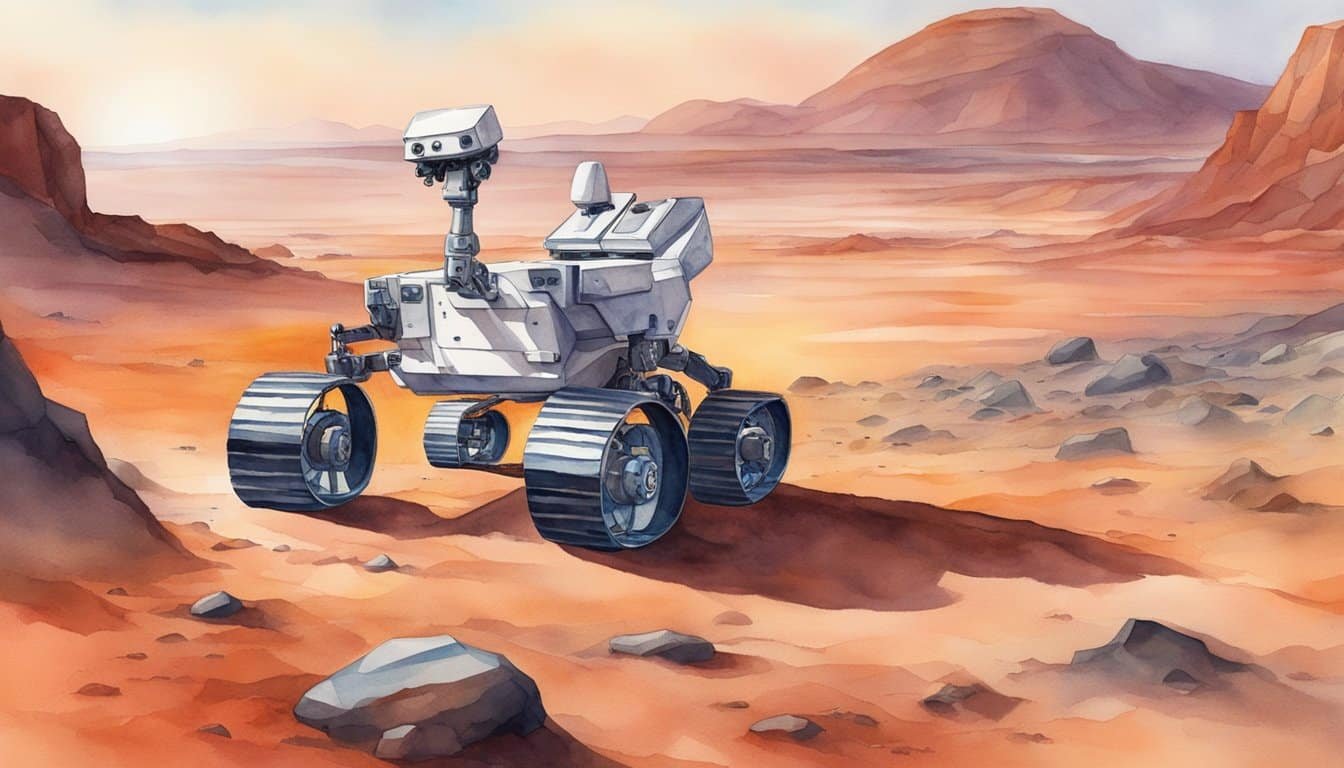Possibilities of Life on Mars
The red planet Mars has been a subject of wonder and the setting for countless sci-fi fantasies. But actual scientists have been considering the real possibility of life existing there for some time. When digging into the prospect of Martian life, a critical component is looking for evidence of ancient life because conditions today may be far too harsh for life as we know it.
Astrobiology, a field that sounds as cool as it is, delves into these mysteries and has theories on how microbial life could possibly exist on Mars. Mars’ surface has shown some promising signs, such as biosignatures and organic compounds—both of which are similar to early signs of life on Earth.
Talking about tough cookies, extremophiles—microorganisms that can survive extreme conditions—are the usual suspects when we think about potential life on Mars. These tiny powerhouses challenge our understanding of habitability, as they can thrive in places previously deemed uninhabitable.
-
Ancient Rivers and Lakes: Once upon a time, water flowed on Mars, creating lakes that could have supported life.
-
Organic Molecules: The Curiosity rover found organic molecules in Martian soil, which could be remnants of ancient life or food for microorganisms.
-
Methane Burps: Seasonal releases of methane, detected by Mars missions, hint at active underground processes—perhaps even microbial ones.
Astrobiologists are like detectives, piecing together clues that Mars offers. They look at rock formations, chemical signatures, and even the planet’s atmosphere for hints of past or present life. Each discovery, from sulfur abundance to potential past biocompatibility, is another piece of the cosmic puzzle over whether Mars could be, or ever was, a cosmic oasis for life.
Mars Exploration and Scientific Missions

In the quest to unravel the mysteries of the red planet, scientists have deployed sophisticated robotic explorers and conducted detailed analyses of Mars’ geology and climate. The insights from these missions are shaping our understanding of whether life could ever have existed on Mars.
Robotic Explorers
Mars has been a hub of robotic exploration with missions led by NASA and various space agencies. Notably, the Mars Exploration Rovers, Spirit and Opportunity, laid the groundwork for subsequent, more advanced rovers. The latest, NASA’s Mars 2020 Perseverance Rover, launched from Florida’s Cape Canaveral, now maneuvers within the intriguing landscapes of Jezero Crater. Aiding these surface missions is an international array of orbiters, relaying key data back to eager teams stationed in places like JPL in Pasadena, California.
Analyzing Mars Geology and Climate
Mars rovers also double as mobile geologists, armed with tools designed to dissect the planet’s geology and ancient climate indicators. They utilize sophisticated instruments such as the SHERLOC instrument and PIXL, which on the Perseverance rover, examine rock surfaces to deduce the presence of past water flows and perhaps, microfossils. Orbiters complement this by mapping mineral deposits across the Martian plains, adding pieces to the planet’s history puzzle.
Findings from Perseverance and Curiosity
The science teams behind the Perseverance and Curiosity rovers have been diligently analyzing regolith, soil, and rocks to understand Mars’ capacity to host life. Perseverance, in particular, scouts for biosignatures within Jezero Crater, an ancient river delta, with high hopes for a future sample return mission. These robotic scientists, through chemical analysis of Martian dust and soil samples, strive to reveal Mars’ secrets beneath its dusty exterior. The diligent examination of carbon dioxide cycles and the search for organic molecules are probing the planet’s ability to sustain microbial life.
What Are the Implications of Discovering Life on Mars for Our Understanding of Other Celestial Bodies?
Discovering life on Mars would revolutionize our understanding of the universe, suggesting that life could thrive in extreme environments elsewhere. This monumental revelation would lead scientists and enthusiasts alike to unite in unveiling cosmic wonders together, fostering collaboration in exploring the possibilities of life on other celestial bodies.
Challenges and Future of Human Exploration

Human exploration of Mars represents an ambitious leap into becoming an interplanetary species. The journey involves overcoming harsh conditions and solving complex problems associated with survival and settlement away from Earth.
Surviving the Martian Environment
The Martian environment is forbidding. Temperatures on the red planet can dive as low as -125 degrees Celsius during winter at the poles, and Martian dust storms can envelop the entire planet for months. Future explorers must contend with these extreme conditions to conduct research and potentially search for evidence of past life on Mars. Establishing a habitable environment for humans requires advanced habitat designs, capable of withstanding Mars’ thin atmosphere and providing essential life support systems.
- Temperature: Insulation and heating technologies critical for survival
- Radiation: Shielding from harmful cosmic rays and solar radiation necessary
- Atmosphere: Creating breathable air within habitats
- Soil: Assessing soil for use in agriculture, requiring nutrients and water
Interplanetary Travel and Settlement
Traveling to Mars is a feat that pushes current technology to its limits. Agencies like NASA, headquartered in Pasadena, California, continue to develop propulsion systems that can make the journey more time-efficient. Energy sources that power these long voyages need to be reliable and potent enough to ensure that astronauts can get to Mars, conduct their missions, and return home.
- Travel Time: Approximately 6-9 months with current technology
- Propulsion Systems: Development of faster, more efficient engines
- Habitats: Constructing sustainable living quarters on Martian terrain
- Sustainability: Establishing a supply of food, water, and energy
Once there, creating a self-sustaining colony will involve utilizing Martian resources, which might include ice water mining and in-situ resource utilization (ISRU) to generate necessary materials for construction, maintenance, and life support. The concept of “living off the land” takes on a new meaning when considering the colonization of a whole new planet.

